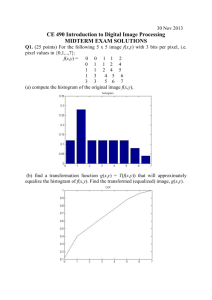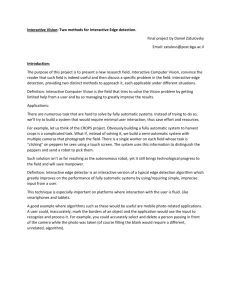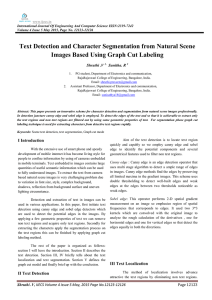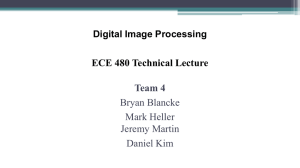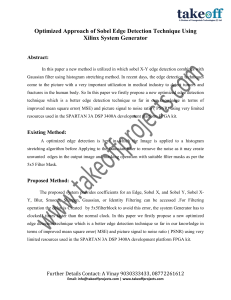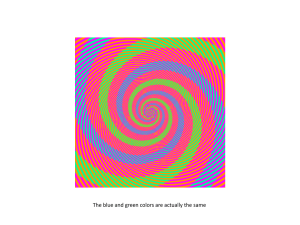EDGE DETECTION
advertisement
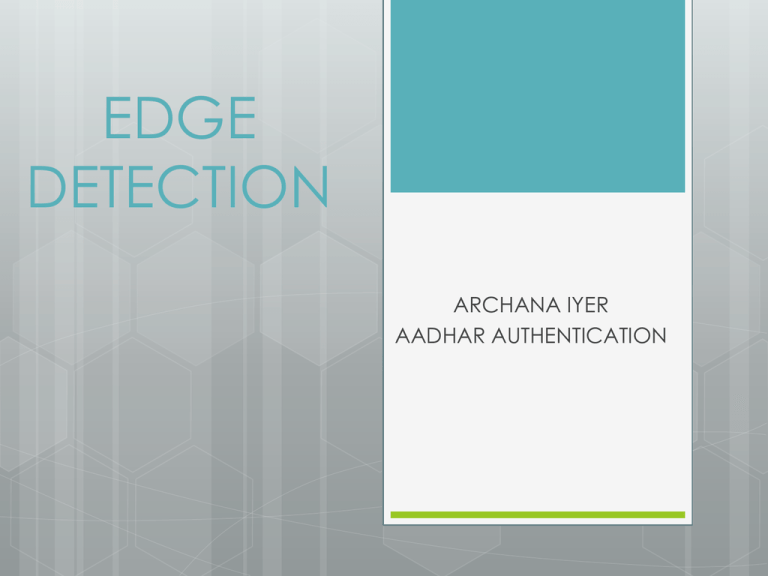
EDGE DETECTION ARCHANA IYER AADHAR AUTHENTICATION • • • Edges are boundaries between different textures. Image Texture gives us information about the spatial arrangement of color or intensities in an image or selected region of an image. Edge detection is a set of mathematical methods which aim at identifying points in a digital image at which the image brightness changes sharply or in other words, has discontinuities Why use edge detection? The result of applying an edge detector to an image may lead to a set of connected curves that indicate the boundaries of objects It will significantly reduce the amount of data to be processed and may therefore filter out information that may be regarded as less relevant, while preserving the important structural properties of an image DIFFERENT EDGE DETECTION TECHNIQUES Robert’s Edge Detection Prewitt Edge Detection Sobel Edge Detection Canny’s Edge Detection Laplacian Edge Detection SOBEL OPERATOR Find approximate absolute gradient magnitude for each pixel PREWITT Sobel and Prewitt Advantage: Easy to implement because mask is small You get information about magnitude and direction Disadvantage: Result is 3 pixels wide which requires thinning Sensitive to noise Produces thick edges and sometimes misses edges Not useful for large images • • • • • • CANNY’S EDGE DETECTION Canny’s method is preferred since it produces single pixel thick, continuous edges. It is not affected much by noise. It is robust and adapts to changes in noise. It has a better signal to noise ratio and it uses probability for finding error rate. SMOOTHING Filter out any noise in the original image before trying to locate and detect any edges Done using a Gaussian filter with standard convolution Preferable use a smaller mask FINDING GRADIENT & EDGE DIRECTION Done using the Sobel filter Problem is that output image is a few pixels thick NON MAXIMUM SUPPRESSION Converts the blurred image to sharp images Done by preserving all the local maxima and deleting everything else You compare pixels with the ones on top & bottom & then retain the maximum pixel Gives a thin line HYSTERESIS It eliminates streaking Makes use of 2 threshold values You classify edges as weak and strong based on the 2 threshold values Strong edges are definitely edges Weak edges may or may not be THANK YOU!
